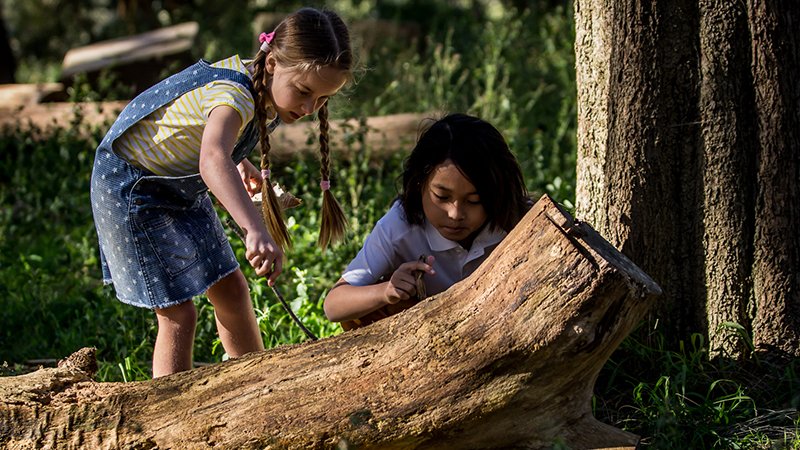Outdoor play has always been a significant part of childhood. Amidst the digital age, where screen time often overshadows the mud-streaked adventures of yesteryears, a resurgence of appreciation for the great outdoors is taking place. Engaging in outdoor activities not only encourages physical development but also promotes cognitive and emotional growth in children. Central to this movement is the concept of the nature play playground, a design philosophy that integrates the natural environment with play structures, offering children a unique opportunity to embrace the wild.
Understanding the Concept of Nature Play
Nature play is a term that encapsulates a child’s interaction with natural elements. It fosters an environment where the outdoors becomes a canvas for imaginative play, learning, and exploration. Nature play playgrounds are deliberately designed to utilise materials that are harmonious with the natural setting, featuring elements such as timber, sand, water, and living plants.
The Benefits of Nature Play Playgrounds for Kids
The advantages of nature play are multifaceted. Children who spend time in nature develop stronger immune systems and experience less stress. They engage in more physical activity, which combats obesity and related health issues that are proliferating in modern societies. Cognitive benefits include enhanced problem-solving skills, creativity, and critical thinking. Emotional growth is nurtured as children learn to manage risks, conquer fears, and build resilience through outdoor challenges.
The Design Principles of Nature Play Playgrounds
When creating a nature play playground, specific design principles are pivotal in achieving a successful outdoor play environment. These include the careful manipulation of the landscape to provide varied terrain, the use of natural materials to foster a connection with nature, and the incorporation of plant life to invite biodiversity and seasonal change. A balance between open spaces and secluded areas allows children to engage in both active play and quiet exploration.
Essential Features of Nature Play Playgrounds
Essential to a nature play playground are features that stimulate a child’s sensory experiences. Components such as logs, boulders, and hills offer climbing and balancing activities. Water play areas and sandpits encourage tactile experimentation. Gardens, whether vegetable or sensory, provide experiences with growth and life cycles. Additionally, shade structures woven from living plants can create enchanting spaces that evolve over time.
Incorporating Nature Play into Urban Settings
Nature play playgrounds are not limited to rural or natural settings. Urban environments, too, can embrace this concept by integrating elements of nature into their playground designs. Even small urban parks can be transformed into nature-rich play areas with thoughtful planning. The use of indigenous plants and materials not only reflects the local ecosystem but also educates children about their immediate natural heritage.
Sustainability and Eco-conscious Play
A core ethos of nature play playgrounds is sustainability. By utilising renewable resources and supporting the local ecosystem, playgrounds can be built with minimal environmental impact. Through activities that promote environmental stewardship, children gain a deeper understanding of their role in preserving our planet.
Challenges and Considerations in Building Nature Play Playgrounds
Despite their numerous benefits, there are practical challenges in creating nature play playgrounds. One consideration is the maintenance required to keep natural elements safe and engaging. Seasonal changes can affect the usability of certain areas, and natural materials may degrade over time. Therefore, a long-term maintenance plan is crucial for the viability of these spaces.
Encouraging Community Involvement
Community involvement can be instrumental in the development and ongoing care of nature play playgrounds. Partnerships with local environmental groups, educational institutions, and parent-teacher associations can garner the necessary support for these projects. This collective approach not only spreads the workload but also fosters a sense of ownership and pride within the community.
The Role of Educators in Nature Play
Educators have a pivotal role in maximising the impact of nature play. By incorporating outdoor learning into the curriculum, they can facilitate connections between academic concepts and real-world experiences. Teachers acting as guides, rather than instructors, can encourage children to venture beyond their comfort zones and learn through discovery.
Future Trends in Nature Play Playgrounds
The future of nature play promises even greater integration of natural elements into children’s daily lives. Innovations in design may include technology that complements rather than competes with outdoor experiences. Furthermore, as research continues to highlight the importance of nature in child development, we may see an increase in policies supporting the proliferation of nature play playgrounds.
Final Thoughts on Embracing Nature Play
In an age when children’s connection to nature is often interrupted by the virtual, the importance of nature play playgrounds cannot be overstated. As we seek to create environments that nurture healthy, well-rounded individuals, the role of nature in play remains paramount. By embracing the concept of the nature play playground, communities can offer enriching play opportunities that resonate with children and cultivate a lifelong appreciation for the natural world.
Cultivating a Connection with the Outdoors
Ultimately, the goal of nature play playgrounds is to cultivate a deep connection with the outdoors. This connection encourages not only personal growth and learning but also a sense of environmental responsibility that will echo through the actions of future generations. By investing in nature play, societies invest in the health and vitality of both their children and the planet.
In conclusion, nature play playgrounds serve as a bridge between the innocence of play and the profound lessons wrought from the wild. By harnessing the learning potential within our natural environments, we give children an extraordinary gift—a childhood rich with the wonders of outdoor exploration. It’s time for us to embrace the wild and unlock the myriad of benefits that nature play has to offer.











